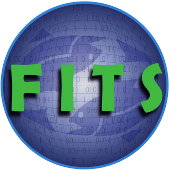Past Symposia
2023 Failing Successfully
Description:
How unexpected results improve fisheries science; This symposium came to mind after reading Failure: Why Science is so Successful by Stuart Firestein. It was a good read and made me think a lot about AFS plenary speakers and attended symposiums. After discussing it with fellow AFS members, the idea of celebrating science as it happens, and the bumps along the way, the failing successfully symposium was born. The target audience for this symposium would be anyone who has been scared to take the leap into a project for the fear of failing. Students and young professionals come to mind right away as they see their peers with 15-30 years’ experience presenting on their recently published, NSF grant funded projects in a journal with an unbelievable impact factor. That is a daunting task to think that your potential project might not go the way it’s planned, and you “wasted” time pursuing the results that never came. But, like most discoveries in science, something in the process could improve, contribute, or provide a catalyst for future fisheries scientists. Presentation slots will be given to those who are willing to present on projects that didn’t go as planned. This could be an “epic failure” as they say or a project with unexpected results that contributed to the field of fisheries. It could also be a presentation focusing on a project that left you with more questions than answers. This type of talk would allow the audience to serve as an unbiased observer to give a new perspective on their subject matter.
2023 MacGyvering II
Description:
Innovative Problem Solving in Fisheries Science; Calling all tinkerers, inventers, and repurposes…the “MacGyvers” of fish science. Fisheris scientists are often successful in “MacGyvering” innovative solutions to a question or problem. You do this by inventing, building, or repurposing technology or analytical tools, especially when resources or existing tools are limited or absent. We want you to share the successes and failures of your applications and processes, ideas for further exploration, and results of research in which your innovative solution was utilized. We hope that your presentation will spark further development, facilitate the adoption of useful tools, and inspire others to explore innovative problem solving in fisheries science.
2022 MacGyvering
Description:
Innovative Problem Solving in Fisheries Science; We want to hear from all you tinkerers, inventers, and repurposers…the “MacGyvers” of fish science. Fish scientists are often successful in “MacGyvering” innovative solutions to a question or problem. You do this by inventing, building, or repurposing technology or analytical tools, especially when resources or existing tools are limited or nonexistent. We want you to share successes and failures of your applications and processes, ideas for further exploration, and results of research where your innovative solution was utilized. We hope that by sharing, you will spark further development, facilitate adoption of useful tools, and inspire others to explore innovative problem solving in fisheries science.
2018 Data Management for Dissemination and Data Visualization
Description:
The need for scientists to effectively communicate is becoming more apparent and important. This includes all fisheries professionals and all aspects of our profession. Disseminating and displaying fisheries data is an important part of communicating our science. The two major components of successfully achieving this are management of the data for access and dissemination and data visualization. Proper data management and data warehousing techniques are vital to creating an access layer from which data can be quickly and easily accessed by dashboards, applications, websites and other tools. Data visualization allows sharing of these data through graphs, charts, information graphics, maps and other visual objects. Thus, data management and visualization work together to communicate complex information in an engaging, accessible and understandable presentation. This symposium will bring together experts from both areas to demonstrate best practices and concrete examples of fisheries data communication.
2017 Fisheries Data Management Skills and Techniques
Being updated..
2015 Managing Data to Meet Shrinking Budgets and Growing Needs (co-sponsor with OFWIM and PNAMP)<br />
Being updated..
2015 Developments in Low-cost Side Scan Sonar Application in Aquatic Research and Conservation (co-sponsored with Fish Habitat Section)<br />
Being updated..
2014 Gaining Better Understanding of Resources and Resource Users through the Application of Emerging Technologies (co-sponsored with Socioeconomics Section)
Being updated..
2013 Using Social Media To Improve Communication In The Fisheries Profession and Engage The Public (co-sponsored with ESAB)
Being updated..
2009 Mapping Distributions of North American Freshwater Fishes
Being updated..
2005 Geographic Information System and Geospatial Analyses in Fisheries Research and Management
Description:
Applications of geographic information system (GIS) and geospatial analyses in fisheries research and management continue to increase as the technology becomes more familiar and available to fisheries scientists, managers and administrators. Recent symposia at the AFS annual meeting, independently-sponsored international symposia, and numerous publications, including the 2004 AFS publication Geographic Information Systems in Fisheries, illustrate the increasing integration of GIS in fisheries. As GIS software becomes more sophisticated and user friendly, applications of GIS in marine and freshwater fisheries have become more wide-ranging and useful for fisheries decision makers. Among the emerging GIS applications are modeling fish population characteristics, spatial analysis of subpopulation genetic patterns, evaluation of fish habitat preferences, risk assessment modeling, remote sensing of aquatic habitats, advances in habitat data collection, analysis of human dimensions information, integration of watershed factors with aquatic habitat condition, and Internet-based GIS applications. The objective of the symposium is to provide current applications of GIS and geospatial analysis in fisheries research and management. This symposium should be of great value to AFS members in that it will demonstrate how GIS is being used to help make decisions on critical fisheries issues and showcase state-of-the-art applications of GIS and geospatial analyses.

